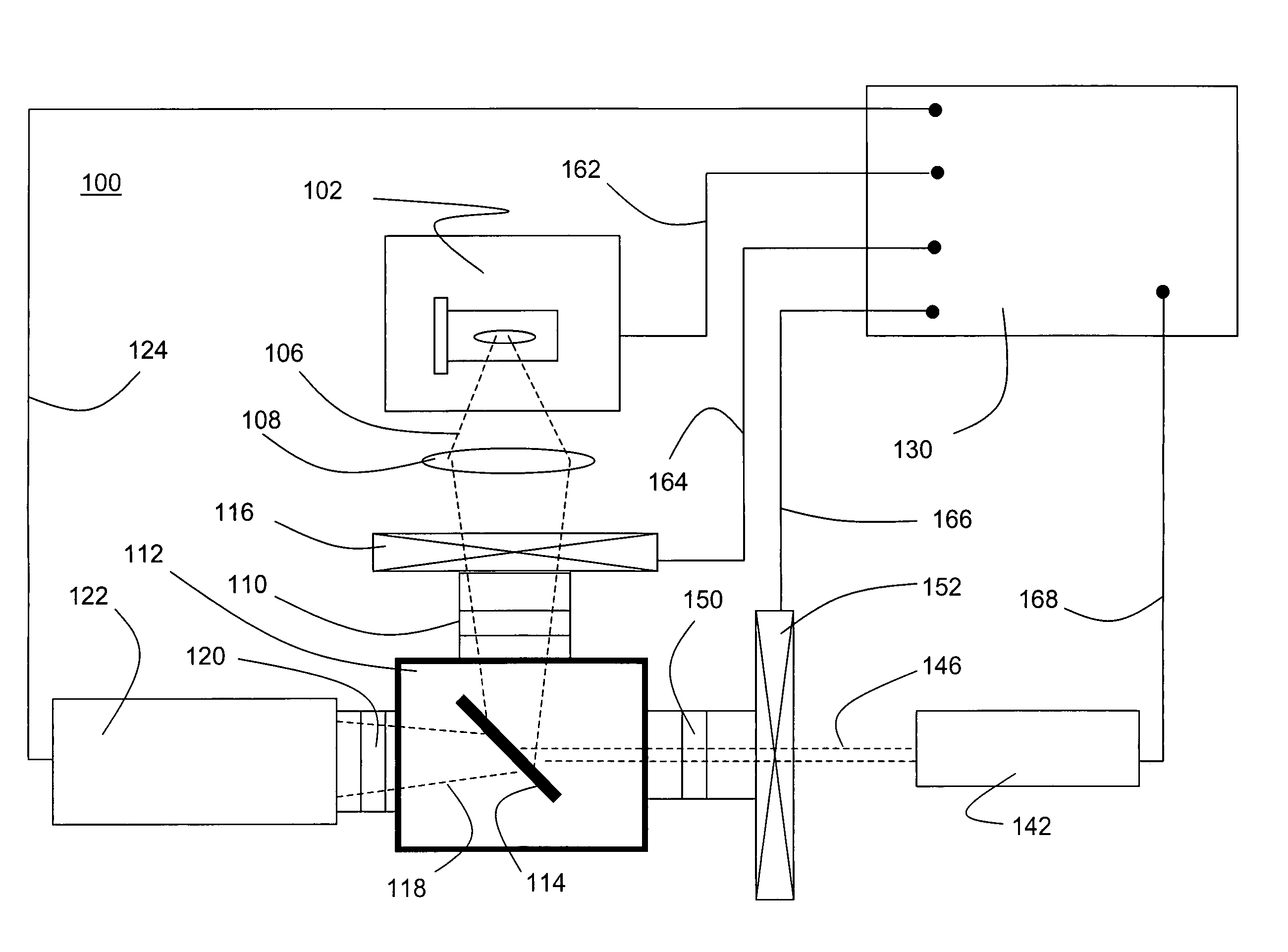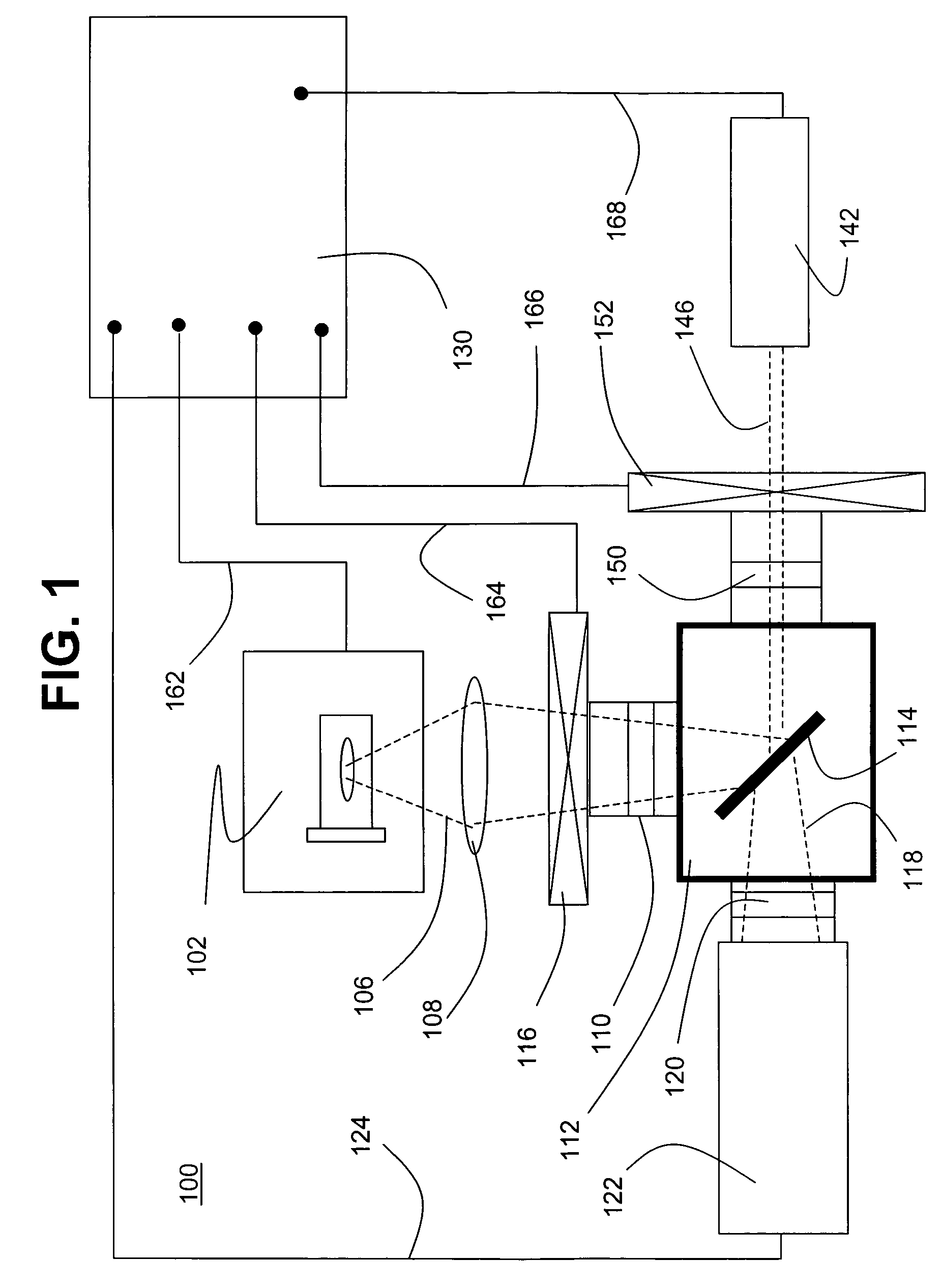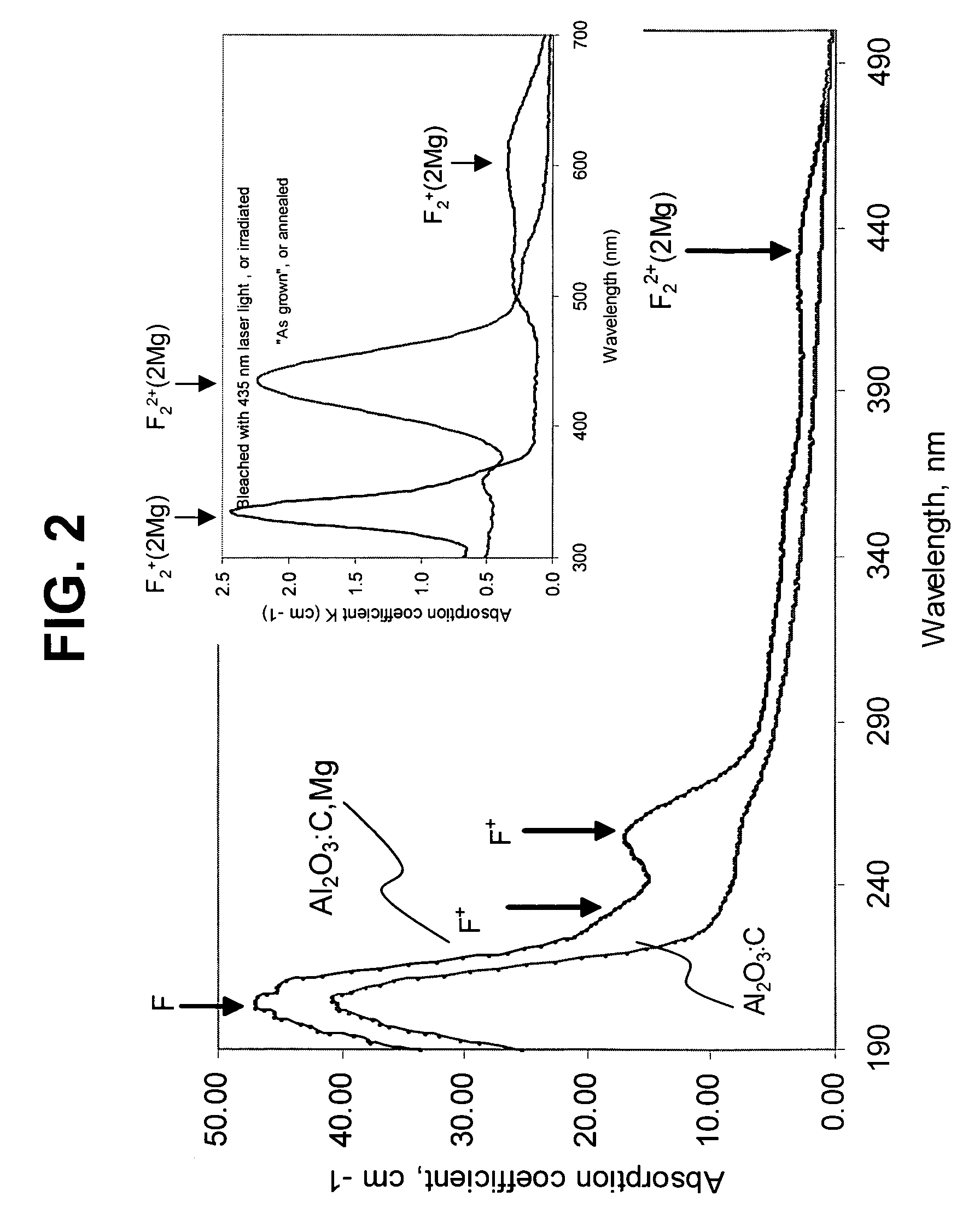Method for non-destructive measuring of radiation dose
a radiation dose and non-destructive technology, applied in the direction of material analysis using wave/particle radiation, conversion screens, nuclear engineering, etc., can solve the problems of destructive readout, low radiation dose, and relatively high dose ra
- Summary
- Abstract
- Description
- Claims
- Application Information
AI Technical Summary
Benefits of technology
Problems solved by technology
Method used
Image
Examples
example i
[0093]Three non-polished samples 7×7×1 mm were cut from the central part of Al2O3:C,Mg crystal. Concentration of Mg in the crystal was determined by spectrum analysis and equals to 27 ppm. The “as-grown” crystal has green coloration due to optical absorption at 435 nm band. The background fluorescence signals from non-irradiated samples were measured and then the samples were exposed to successively increasing doses up to 1000 Gy of X-rays and of 90Sr source beta source. The correction for the over-response of aluminum oxide to soft X-ray irradiation was performed.
[0094]Fluorescence measurements were performed using experimental setup depicted in FIG. 1. Three measurements from each of the three experimental samples after every dose of irradiation were taken. F2+(2Mg)-centers produce a broad fluorescence emission at 750 nm under 335 or 620 nm excitation, see FIG. 4. In order to collect maximum fluorescence light and to avoid high background signal due to possible excitation of other...
example ii
[0096]Method of reduction of the background signal and the low dose detection limit was tested. The main obstacle to achieve lower dose detection limit is the existence of a residual fluorescence signal from non-irradiated “as-grown” samples. The background signal comes from a small number of three electron F2+(2Mg)-centers, which exist in “as-grown” crystals in addition to the main F22+ (2Mg)-centers.
[0097]To decrease the intensity of the background fluorescent signal Al2O3:C,Mg samples with different concentrations of Mg impurity were illuminated with pulsed laser light from a Continuum Panther optical parametric oscillator. The pulsed laser light was tuned to 335 nm wavelength corresponding to the maximum absorption of F2+(2Mg)-centers. The exposure time was 5 min at the average power of 6 mW. As a result of this treatment the background fluorescence signal was reduced from 5 to 10 times and the low dose limit was decreased down to 5 mGy.
example iii
[0098]Radiation dose dependence of fluorescence signal was determined. Four samples of Al2O3:C,Mg crystals with different concentration of Mg impurity in the range from 3 to 27 ppm were tested and showed similar dose dependence but different sensitivity, see FIG. 6. For all tested samples four decades of the dose range useful for fluorescent measurements were obtained. Higher concentration of Mg impurity produces higher intensity of fluorescence, but at the same time it produces higher background signal.
[0099]Radiation dose dependence of 750 nm fluorescence signal was measured before and after laser bleaching procedure for several samples having different concentrations of Mg-impurity, see FIG. 7. It was shown that all three major parameters: the background fluorescence signal, the sensitivity to test 10 Gy dose, and the saturation dose strongly depend on the concentration of Mg in the crystal. The results indicate that the fluorescence at 750 nm is related to Mg-associated color ce...
PUM
| Property | Measurement | Unit |
|---|---|---|
| wavelength | aaaaa | aaaaa |
| wavelength | aaaaa | aaaaa |
| wavelength | aaaaa | aaaaa |
Abstract
Description
Claims
Application Information
 Login to View More
Login to View More - R&D
- Intellectual Property
- Life Sciences
- Materials
- Tech Scout
- Unparalleled Data Quality
- Higher Quality Content
- 60% Fewer Hallucinations
Browse by: Latest US Patents, China's latest patents, Technical Efficacy Thesaurus, Application Domain, Technology Topic, Popular Technical Reports.
© 2025 PatSnap. All rights reserved.Legal|Privacy policy|Modern Slavery Act Transparency Statement|Sitemap|About US| Contact US: help@patsnap.com



